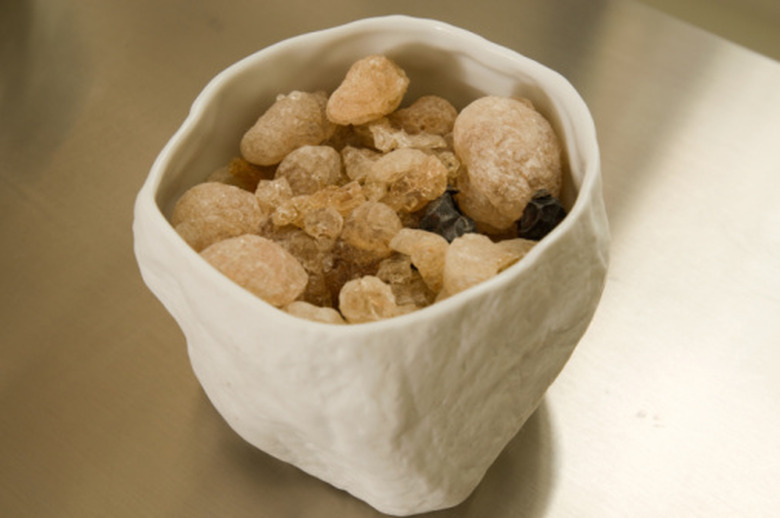Rock Cycle Activities For Students
Cycles play an important roll in teaching students a science curriculum. The rock cycle is first introduced to students around third grade, depending on whether the school follows national or state science standards. When you're teaching elementary-aged students, make connections for them to their own lives while providing many tactile kinesthetic opportunities.
Igneous Rocks
Igneous Rocks
Explain to students the difference between extrinsic igneous rock and intrinsic igneous rock along with the difference between magma and lava. Once students understand that intrinsic igneous rock is formed inside the Earth from magma–which cools before it reaches the surface–and the extrinsic igneous rock is formed from lava–which cools on the surface of the Earth–they will be ready for an igneous rock activity. Show students chocolate chips. Explain to students that the chocolate chips represent rock that will soon be exposed to heat and pressure. Place chocolate in a heat-proof bowl and put this on a hot plate. Have students make observations as chocolate melts. Once chocolate melts, allow students to dip a pretzel stick in the chocolate and lay the pretzel on wax paper. Students will observe what happens to the chocolate. Then help the students to make the connection between the chocolate and lava. The chocolate, once melted, is like lava flowing out of the Earth: as soon as it hits the air, it begins to cool until it is hard.
Sedimentary Rock
Sedimentary Rock
Sedimentary rocks form in layers. Break students into small groups of no more than four each. Provide each group with a paper plate, two pieces of dark wheat bread and one piece of white bread. Instruct students to place one piece of dark wheat bread on their plate. This represents the bottom layer of the ocean. Explain that there is a storm that stirs up the ocean and distributes particles and silt on top of the bottom layer. Students will then spread a layer of white icing on their bread and sprinkle that with goldfish crackers. Continue the story of various events, including earthquakes and hurricanes. Students will alternate placing their piece of white bread with chocolate icing, fruit ring cereal and candy sprinkles and then finish with a final piece of dark wheat break. Have students apply pressure by pushing down on their sedimentary sandwich with the palm of their hand. Then cut the sandwich in quarters. Students will make observations of the layers they see when the sandwich is cut.
Metamorphic Rock
Metamorphic Rock
Metamorphic rocks are rocks formed from heat and pressure. Students need to understand that "metamorphic" rock means rock whose form changes. Provide students with a slice of white bread and a slice of dark brown bread. The bread should be soft and pliable. Instruct students to remove the crusts from the bread. Students will lay the white bread on top of the piece of dark bread. Have students to apply pressure by rolling the bread between their hands. Explain the more that students rub their hands together, the more heat and pressure they are placing on their rock. Have students work their bread together until they form a ball of dough that should now be lighter than the dark bread. Have students make observations and notes in their science journals.
Rock Cycle Game
Rock Cycle Game
Having students play games will aid students in learning the rock cycle. The age group will determine how complicated or simplistic the game is set up. Create three stations representing igneous, metamorphic or sedimentary rock around the classroom with a set of dice. At each station, students will roll the dice. A poster will be hung at each station with various scenarios depending on what the student rolls. Scenarios will be related to changes that result in rock formation such as:
- heat
- pressure
- deposition
- hurricanes
- weathering
- volcanic eruption
Students will play the game for a set period of time, usually around 15 minutes. Either students will be provided with a data sheet to record their activities during the game or they will take notes in their science journals. As students move through the rock cycle, they will record what happens to them and what type of rock they become. Some students will find that they remain sedimentary the entire time, while others will continuously cycle through the three stages of the rock cycle.
Cite This Article
MLA
Glaeser, Patricia. "Rock Cycle Activities For Students" sciencing.com, https://www.sciencing.com/rock-cycle-activities-for-students-12748984/. 26 April 2011.
APA
Glaeser, Patricia. (2011, April 26). Rock Cycle Activities For Students. sciencing.com. Retrieved from https://www.sciencing.com/rock-cycle-activities-for-students-12748984/
Chicago
Glaeser, Patricia. Rock Cycle Activities For Students last modified March 24, 2022. https://www.sciencing.com/rock-cycle-activities-for-students-12748984/
